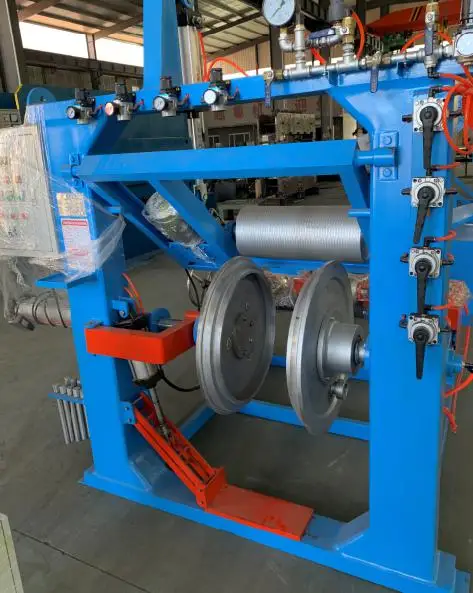In hot vulcanization, a special press applies both heat and pressure to the splice to cure the intermediary and cover materials into a high-strength joint. The press applies pressure consistently across all surfaces. Pressure can range from 34 to 1200 kilopascal (5 pounds per square inch to 175 per square inch), depending on the belt. Cooking temperatures range from 120 to 200 degrees Celsius (250 to 400 degrees Fahrenheit), depending on belt type and rubber compound. The time required to cure will depend on belt thickness and compound: belt manufacturers normally include time and temperature tables in splicing manuals. Although the equipment is automated, the process may require constant human attention to achieve the best results. Portable vulcanizing presses for curing the splice are available in sizes to match various belt widths. Small fabric belt splices can often be cured in a single setup. Larger fabric belt splices can be cured in two, three or more settings of the vulcanizing press without problems.
With steel-cord belts and finger splices, it is important that the press be large enough to cure the splice in a single setup to avoid undesirable rubber flow and cord displacement.
When the vulcanization procedure, or “cook”, is completed, the resulting splice should be inspected for any visible defects that might indicate a weakness. It is common practice to grind or buff away any surplus rubber from the splice to improve the performance of the joint as it passes through belt cleaners and other conveyor components.
In cold vulcanization, the belt is joined using adhesives of bonding agents that will fuse the ends of the belt together to form a continuous loop.
In cold splicing, the joint is not cured in a press. The belt ends are carefully laid together in proper alignment with the adhesive, and full contact is achieved with hand rollers, pressure rollers, or hammering in a prescribed pattern. The bond can often be improved by simply putting weights on the belt during the cure interval.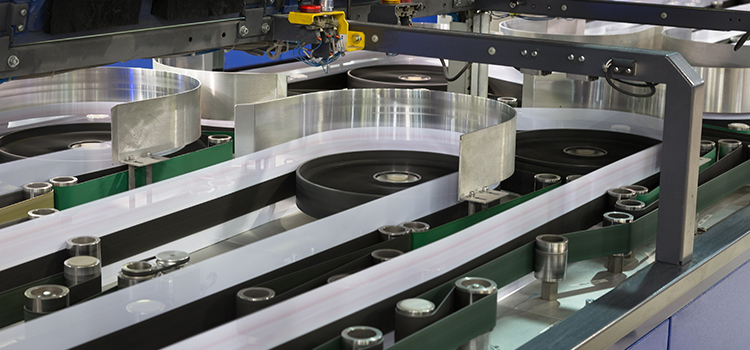 Most cold vulcanization cements require at least four hours for a usable cure and 24 hours for a full cure. Best results are achieved by following the manufacturer’s recommendations. The belting manufacturer is the best source of information on proper vulcanization techniques and materials.
Most cold vulcanization cements require at least four hours for a usable cure and 24 hours for a full cure. Best results are achieved by following the manufacturer’s recommendations. The belting manufacturer is the best source of information on proper vulcanization techniques and materials.
Vulcanized splices require the cutting away of layers of rubber covers and fabric carcass to let the belt ends be overlapped and joined. In general, the geometry of a splice can be the same whether the joint will be vulcanized hot or cold.
Bias spices are most common, as the angle increases the length of the bonding surface and reduces stress on the splice as it wraps around the conveyor’s pulleys. The bias angle also serves to reduce the chance of tearing open and leading edge of the splice. This bias angle is generally 22 degrees; most vulcanizing presses are manufactured with this bias angle built in.
A splice design that is seeing increasing acceptance, particularly with high-tension fabric belts, is the finger splice.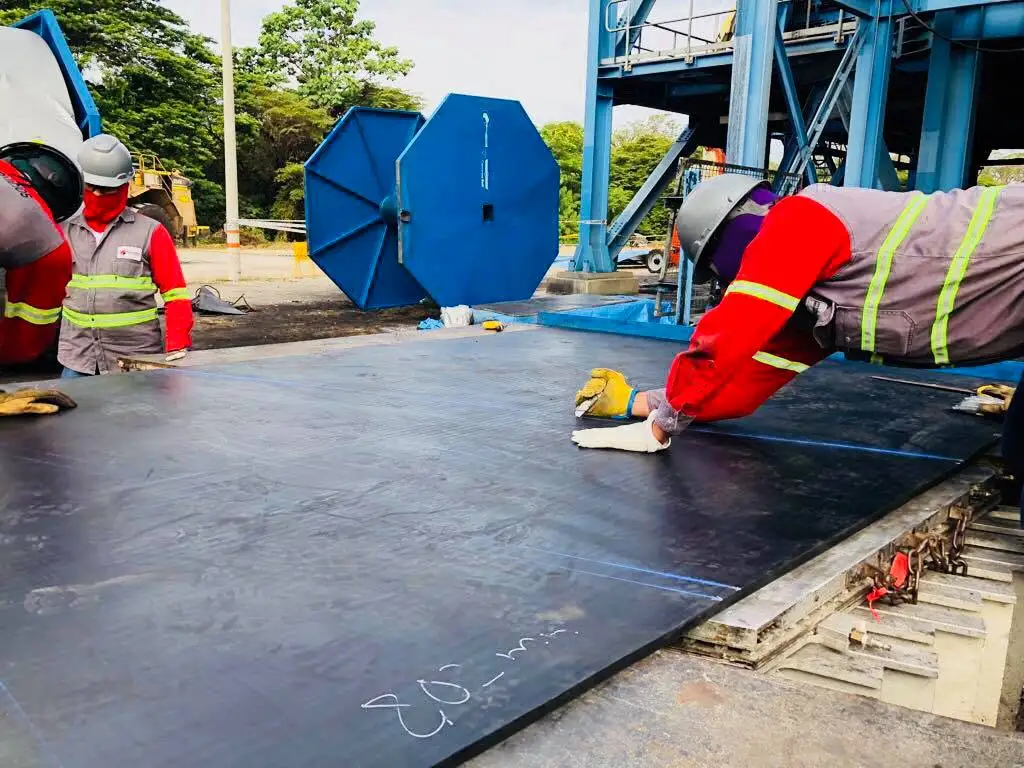 This design involves cutting the two ends of the belt into a number of narrow triangular “fingers.” The fingers—each typically 30 or 50 millimeters (1-3/16 or 2 inches) wide at the base and between 850 to 1200 millimeters (33 to 48 inches) in length depending on belting specifications—are interlaced, and then the hot vulcanization is preformed. Finger splices must be preformed in a single “cook.”
This design involves cutting the two ends of the belt into a number of narrow triangular “fingers.” The fingers—each typically 30 or 50 millimeters (1-3/16 or 2 inches) wide at the base and between 850 to 1200 millimeters (33 to 48 inches) in length depending on belting specifications—are interlaced, and then the hot vulcanization is preformed. Finger splices must be preformed in a single “cook.”
For all splice designs, it is important that the overlapped areas and any materials added to the joint be properly installed to minimize damage to the finished splice from belt-cleaning systems or other components.
See Also: Vulcanized Conveyor Belt Splices Part 1 | Part 3.
Vulcanization is the process of curing raw rubber by combining the rubber with additives in the presence of heat and pressure (“hot” vulcanization).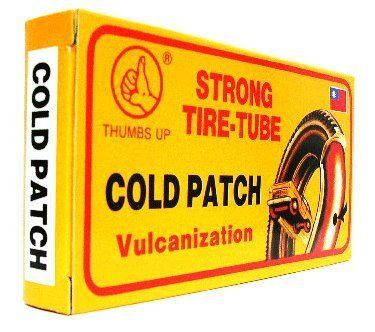 Bonding of the belt ends with adhesives is known in the belting trade as “cold”vulcanization.
Bonding of the belt ends with adhesives is known in the belting trade as “cold”vulcanization.
Vulcanization is generally the preferred method of belt splicing, due to the superior strength, longer service-life and cleaner operation it offers. Vulcanized splices are really the only option for the long-term performance of high-tension steel-cord belting. Operations that require frequent additions or removal of sections of belting, such as extendable underground belts or conveyors with limited take-up capabilities that require shortening of the belt to maintain tension, are not suitable for vulcanized splices.
Due to their superior strength, vulcanized splices allow the application of maximum belt tension, resulting in better pulley-to-belt traction. A vulcanized splice has no internal weaving, braiding, sewing, welding or other mechanical link. The splice is solely dependent on rubber adhesion to the carcass or steel cords, as the tensile members of the splice, textile plies or steel cords, do not touch each other.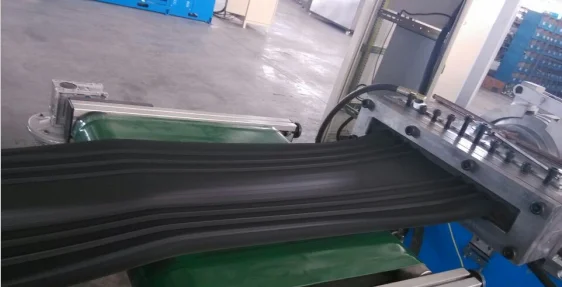 Adhesion is obtained through use of an intermediary rubber or rubber-like material called tie gum, installation gum, or cement.
Adhesion is obtained through use of an intermediary rubber or rubber-like material called tie gum, installation gum, or cement.
Step-by-step procedures for vulcanized splices vary between manufacturers. In general, there are three steps:
 Fill and cover rubbers are then laid in place, and the belt is cured in the same manner for both steel-cable and fabric belts.
Fill and cover rubbers are then laid in place, and the belt is cured in the same manner for both steel-cable and fabric belts.There are two types of vulcanization: hot and cold. In hot vulcanization, the layers of a belt are stripped in a stair-step or finger fashion and overlapped with glue and rubber.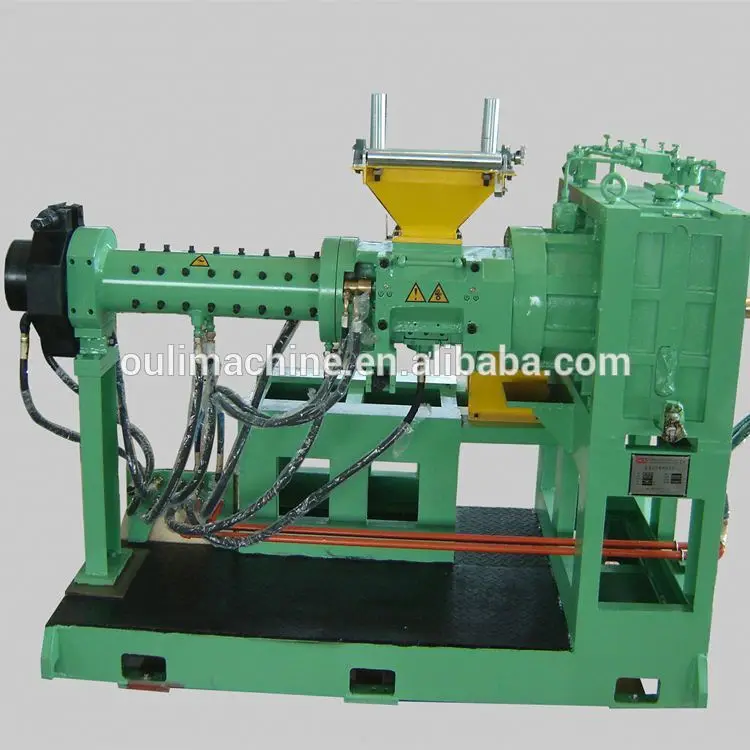 A heated press or “cooker” then applies heat and pressure to “vulcanize” the belt into an endless loop. In cold vulcanization (technically called chemical bonding), the belt’s layers are joined with an adhesive or bonding agent that cures at room temperature. Vulcanization, particularly hot vulcanization, is usually performed by outside contractors who have the specialized equipment and expertise to perform the required procedure.
A heated press or “cooker” then applies heat and pressure to “vulcanize” the belt into an endless loop. In cold vulcanization (technically called chemical bonding), the belt’s layers are joined with an adhesive or bonding agent that cures at room temperature. Vulcanization, particularly hot vulcanization, is usually performed by outside contractors who have the specialized equipment and expertise to perform the required procedure.
See Also: Vulcanized Conveyor Belt Splices Part 2 | Part 3.
March 1, 2020
Cure refers to the bonding of polymeric materials through physical or chemical processes. The basis of the conveyor belt, regardless of the number of reinforcing layers, is a rubber compound, so everything related to gluing products is called vulcanization. At the same time, depending on the principle of influence on the structure, hot and cold type welding is distinguished.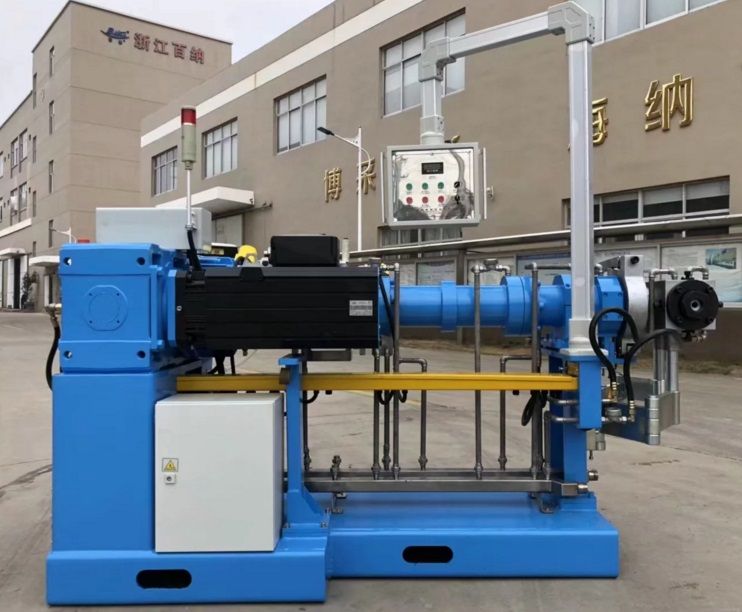 nine0006
nine0006
The cold vulcanization method is rightly considered the most popular technology used for joining, repairing and upgrading rubber fabric conveyor belts. The demand for this method of connection is due, first of all, to a successful combination of ease of execution, efficiency and a decent result. Cold welding is devoid of the disadvantages of mechanical fastening, which requires violation of the integrity of the product structure. At the same time, the procedure guarantees high reliability and strength of the connection without the need for expensive heavy equipment, without which hot vulcanization is indispensable. nine0006
Performed by hand, bonding does not depend on the availability of power sources and allows work even in cramped conditions. In a word, the technology has much more “pluses” than “minuses”, which, of course, also exist, and mainly relate to restrictions on the implementation conditions, including: dries up. For this reason, the recommended temperature range for work is from +10 to +17 degrees.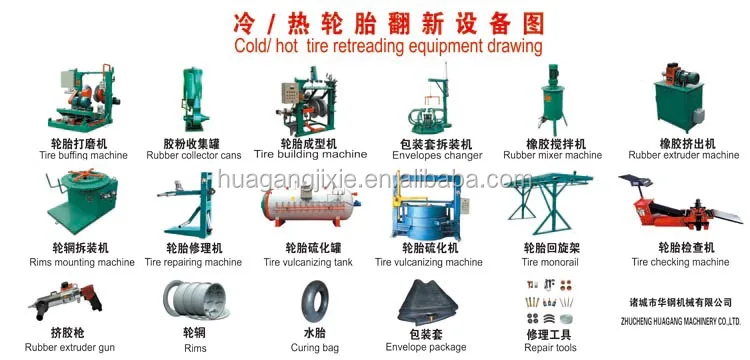 nine0015
nine0015
Since the cold method ensures a one-piece connection, all operations are carried out on the conveyor. The material for splicing surfaces is a two-component self-vulcanizing adhesive, consisting of a reagent and a hardener.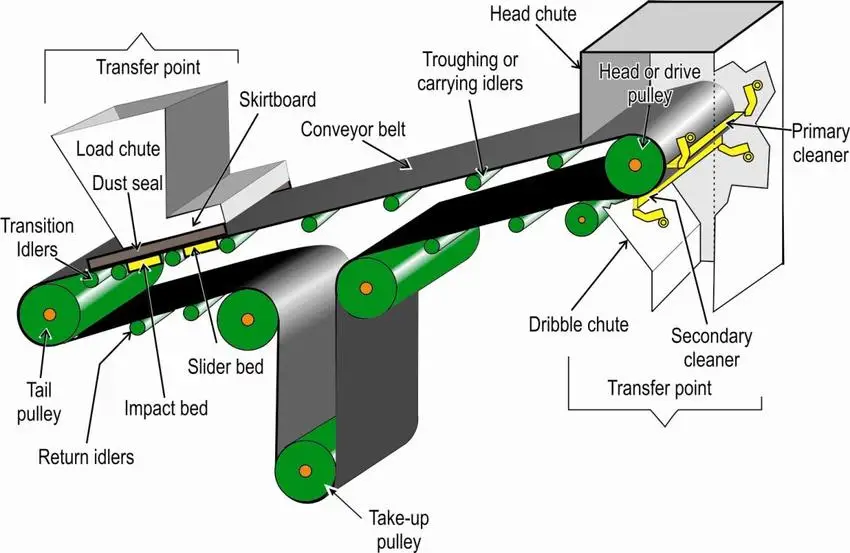 The components are mixed before application. nine0006
The components are mixed before application. nine0006
Vulcanizing a conveyor belt is a responsible and time-consuming undertaking that requires skilled execution. The greatest difficulty is the preparation of surfaces for joining, the quality of which determines the strength and durability of the seam.
The list of services of the enterprise LLC "Veles Group" includes field docking of conveyor belts, as well as restoration and preparatory work for welding corrugated boards, grippers and guides, both on the customer's territory and on its own industrial site. Among other things, the cold vulcanization method is widely used for lining and rubberizing metal parts of conveyor systems. We will answer questions by phone +7 (495) 799-36-46, 8 (800) 700-41-43 . Our address is Moscow, Prospekt Mira, 102 .
Materials for cold vulcanization of conveyor belts in Russia
Professional adhesives for joining and repairing conveyor belts by cold and hot vulcanization - SC 4000, Conti Secur BFA, Nilos TL-T70, TRS 2002 , Elastosal H7, T-REX Vulc.B
Two-component cold vulcanizing adhesive systems with excellent adhesion and resistance to dynamic loads, universally applicable for durable bonding rubber-rubber, rubber-textile, rubber-metal, textile-textile. nine0006
All adhesives in this group are classified as professional adhesives and are intended for industrial use only in compliance with the necessary safety regulations and industry standards for use. nine0006
Instructions for joining conveyor belts by cold vulcanization apply to almost all known adhesives. Differences may be in the preparation of the adhesive mixture with hardener, drying time
CENTROBELT - international supplier of solutions for conveyor transport, conveyor belts and industrial components
Your inquiries: sales@centrobelt.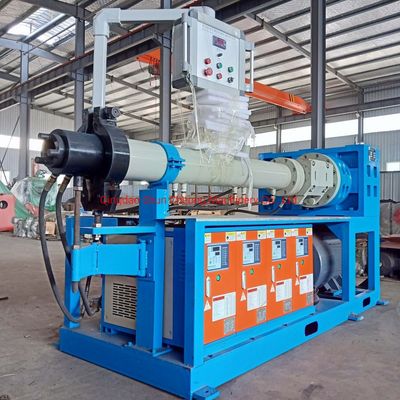 ru
ru
adhesive for conveyor belt
12 /24/36/48
Date added
6Country of brand registration:
Germany
Supplier:
NILOS
Specify availability
Quantity:
NILOS TL T-70
Code: H 0257-K
NILOS TL T-70 adhesive for rubberizing surfaces of conveyor belts and rubber. Designed for gluing conveyor belts, repairing damage to rubber linings, lining drums on belt conveyors.
Country of brand registration:
Germany
Supplier:
NILOS
Specify availability
Quantity:
Elastosal H7
Code: 5252528
ELASTOSAL H7 two-component adhesive for joining and repairing conveyor belts, drum linings, rubberizing metal surfaces.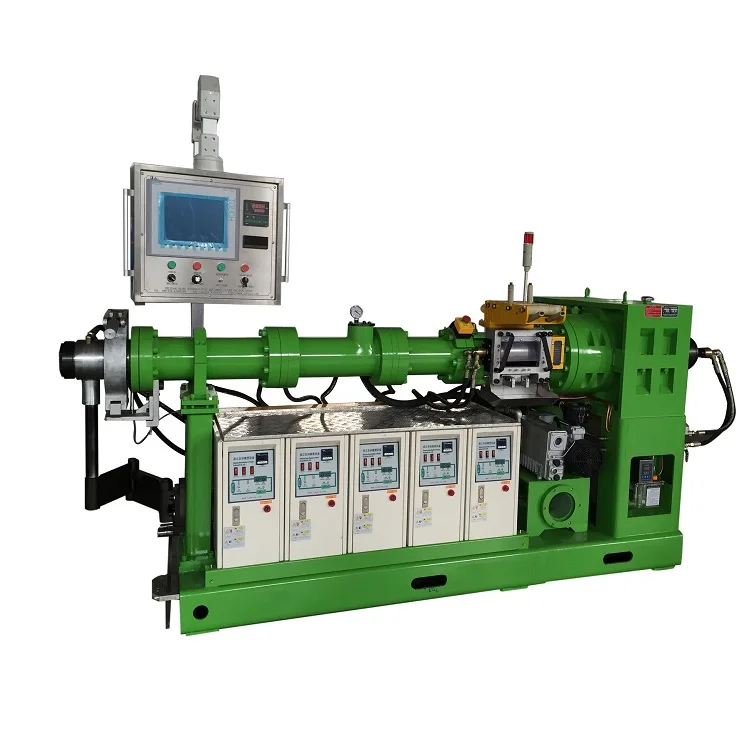 ELASTOSAL H7 is mixed with RE hardener. Black color.
ELASTOSAL H7 is mixed with RE hardener. Black color.
Weight:
1 kg
Country of brand registration:
Germany
Specify availability0006
HUAO TP100 two-component adhesive for joining and repairing conveyor belts, lining drums, rubberizing metal surfaces. HUAO TP100 (1 kg) is mixed with RE hardener. Black color. Huao production, China
Brand registration Country:
China
Supplier:
Huao
Available Clear
Quantity:
CONTI Secur BFA
Code: 3293298308 9000 9000 9000 CONTI SECUR BFA for a two -component union. Conti Secur BFA is designed for professional use. Volume 0.8 l + hardener 40 g. Color black. nine0006
Supplier:
Continental
Brand registration Country:
Germany
Clause
5 000 ₽
SC 4000 SC 4000 CEMENT REMA TIP TIP TIP TIP TIP 9000
Code: 5252509 9000
9000 9000 REMM for conveyor belts and rubber, for lining drums and rubber.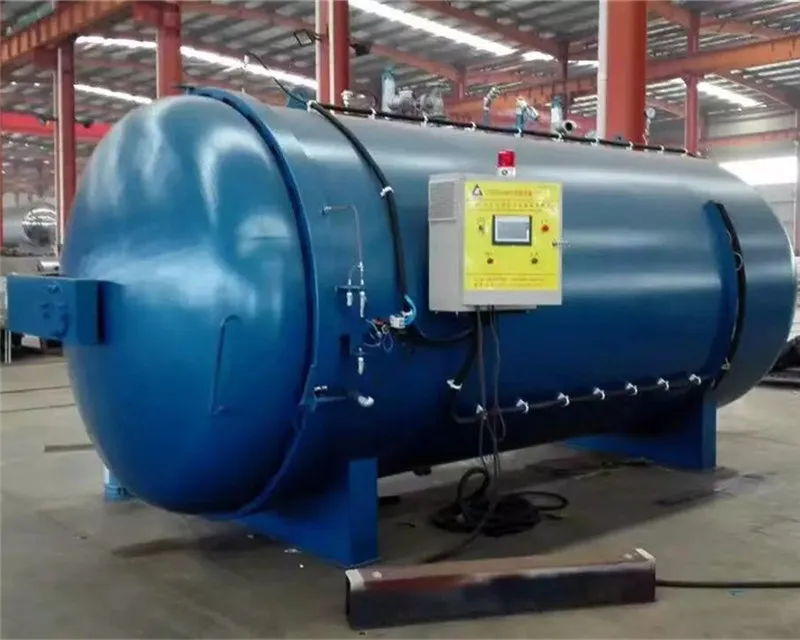 The two-component adhesive Cement SC 4000 (0.7 kg) is used in conjunction with a 4% hardener and has excellent adhesive properties. Green. Article 5252509. Manufactured by REMA TIP TOP, Germany
The two-component adhesive Cement SC 4000 (0.7 kg) is used in conjunction with a 4% hardener and has excellent adhesive properties. Green. Article 5252509. Manufactured by REMA TIP TOP, Germany
Supplier:
REMA TIP TOP
Specify availability
Quantity:
Adhesive T-REX Vulc. B for conveyor belt
Code: 2431977
Professional two-component adhesive T-REX Vulc. B for cold vulcanization (joining of conveyor belts, lining of drums, rubberizing of metal surfaces). Black color. Volume 700 g + hardener 30 g Supplier T-REX Rubber International, The Netherlands
Supplier:
T-REX
Specify availability
Quantity:
TRS 2002 NEW
Code: 302300
Two-component glue TRS 2002 for industry by means of cold gluing Bonds rubber to rubber, rubber to fabric, rubber to metal, fabric to fabric, metal to fabric. The main difference between the TRS 2002 NEW glue and the previously produced TRS 2002 glue is the replacement of the solvent.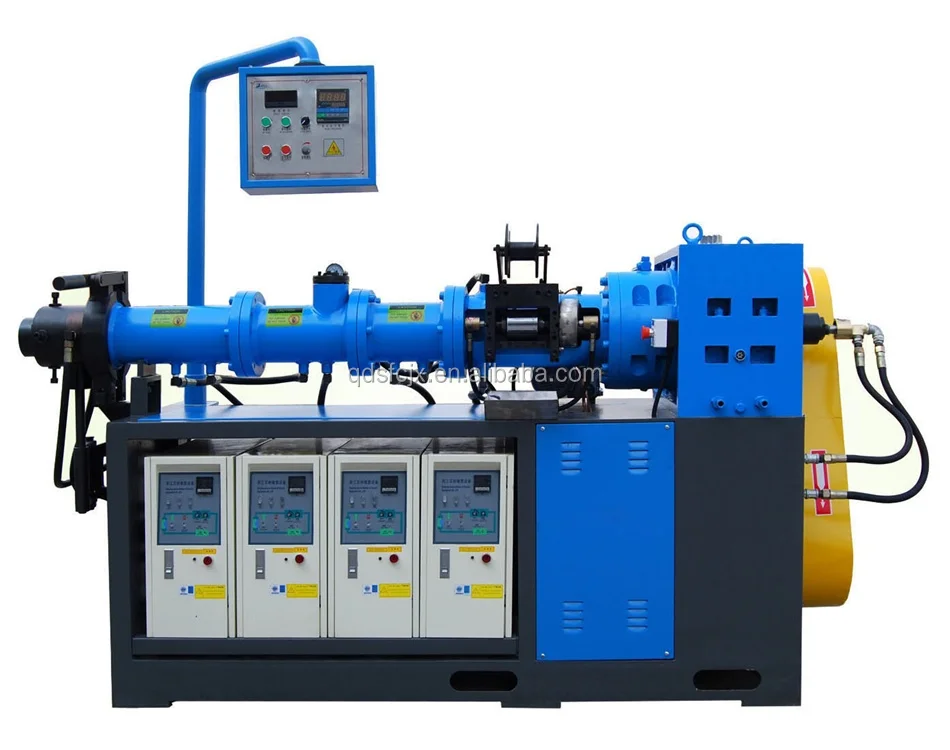 Now, instead of trichlorethylene, tetrachlorethylene (an organic compound that is safer for the human body) is used. nine0006
Now, instead of trichlorethylene, tetrachlorethylene (an organic compound that is safer for the human body) is used. nine0006
Country of brand registration:
Germany
Supplier:
TRS International
Consult
Quantity:
SC 2000 Cement Rema TIP
Code: 5252161 9000
Glue SCP TOP TOP TOP TOP TOP TOM rubber, for lining drums and gumming. Two-component adhesive Cement SC 2000 (1 kg) is used together with 4% hardener UT-R 20 40g and has excellent adhesive properties. Black. Article 5252161. Manufactured by REMA TIP TOP, South Africa
Supplier:
REMA TIP TOP
Consult
,quantity:
TRS PLASTO Polyurethane glue
Code: 303110
TRS Plasto Two -component glue based on polyurethane, used in rubber, shoe and automobile industries, and also at the same time production of transmission tapes and belts. Universal adhesive mixture for gluing polymers based on PVC, EPMD, PU, ABS, EVA, as well as leather, cork, porous and natural rubber, nylon, viscose and Kevlar fabrics.